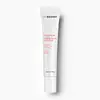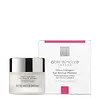What's inside
What's inside
 Key Ingredients
Key Ingredients

 Benefits
Benefits

 Concerns
Concerns

 Ingredients Side-by-side
Ingredients Side-by-side

Water
Skin ConditioningGlycerin
HumectantIsopropyl Palmitate
EmollientCyclopentasiloxane
EmollientSqualane
EmollientBis-Diglyceryl Polyacyladipate-2
EmollientPhenyl Trimethicone
Skin ConditioningCetyl Alcohol
EmollientSorbitan Stearate
EmulsifyingCetyl Phosphate
EmulsifyingPEG-40 Hydrogenated Castor Oil
EmulsifyingPEG-40 Stearate
EmulsifyingPEG-20 Methyl Glucose Sesquistearate
EmulsifyingPhenoxyethanol
PreservativeGlyceryl Stearate
EmollientOryza Sativa Bran Oil
EmollientPEG-100 Stearate
Aloe Barbadensis Leaf
MaskingDisodium EDTA
Sodium Hyaluronate
HumectantTocopheryl Acetate
AntioxidantXanthan Gum
EmulsifyingTriethanolamine
BufferingMagnesium Aluminum Silicate
AbsorbentCamellia Sinensis Leaf Extract
AntimicrobialHydrolyzed Casein
Skin ConditioningPhenethyl Alcohol
MaskingButylene Glycol
HumectantAhnfeltiopsis Concinna Extract
Skin ConditioningCamellia Oleifera Leaf Extract
AstringentVitis Vinifera Seed Extract
AntimicrobialCholesterol
EmollientLecithin
EmollientSalix Alba Bark Extract
AstringentWine Extract
AntioxidantAscorbic Acid
AntioxidantEugenia Caryophyllus Flower Extract
Astringent1,2-Hexanediol
Skin ConditioningCeratonia Siliqua Gum
EmollientCitric Acid
BufferingRose Extract
Skin ConditioningSodium Dextran Sulfate
Gel FormingSucrose
HumectantHydroxyacetophenone
AntioxidantPelargonium Graveolens Flower Oil
MaskingMineral Salts
Skin ConditioningWater, Glycerin, Isopropyl Palmitate, Cyclopentasiloxane, Squalane, Bis-Diglyceryl Polyacyladipate-2, Phenyl Trimethicone, Cetyl Alcohol, Sorbitan Stearate, Cetyl Phosphate, PEG-40 Hydrogenated Castor Oil, PEG-40 Stearate, PEG-20 Methyl Glucose Sesquistearate, Phenoxyethanol, Glyceryl Stearate, Oryza Sativa Bran Oil, PEG-100 Stearate, Aloe Barbadensis Leaf, Disodium EDTA, Sodium Hyaluronate, Tocopheryl Acetate, Xanthan Gum, Triethanolamine, Magnesium Aluminum Silicate, Camellia Sinensis Leaf Extract, Hydrolyzed Casein, Phenethyl Alcohol, Butylene Glycol, Ahnfeltiopsis Concinna Extract, Camellia Oleifera Leaf Extract, Vitis Vinifera Seed Extract, Cholesterol, Lecithin, Salix Alba Bark Extract, Wine Extract, Ascorbic Acid, Eugenia Caryophyllus Flower Extract, 1,2-Hexanediol, Ceratonia Siliqua Gum, Citric Acid, Rose Extract, Sodium Dextran Sulfate, Sucrose, Hydroxyacetophenone, Pelargonium Graveolens Flower Oil, Mineral Salts
Water
Skin ConditioningPropanediol
SolventMagnesium/Potassium/Silicon/Fluoride/Hydroxide/Oxide
PEG-8 Dimethicone
EmulsifyingActinidia Chinensis Fruit Extract
EmollientHydrolyzed Collagen
EmollientMaris Aqua
HumectantGlycolic Acid
BufferingSodium Hyaluronate
HumectantRna
Skin ConditioningPyridoxine Hcl
Skin ConditioningHistidine Hcl
Skin ConditioningPhenylalanine
MaskingTyrosine
MaskingSorbitol
HumectantLecithin
EmollientArginine
MaskingTocopheryl Acetate
AntioxidantXanthan Gum
EmulsifyingVp/Va Copolymer
Acrylates/C10-30 Alkyl Acrylate Crosspolymer
Emulsion StabilisingPEG/PPG-20/6 Dimethicone
EmulsifyingDisodium Adenosine Triphosphate
Skin ConditioningMannitol
HumectantLaurtrimonium Chloride
EmulsifyingSodium Bisulfite
AntioxidantGlycerin
HumectantCitric Acid
BufferingPropylene Glycol
HumectantGlyceryl Linoleate
EmollientGlyceryl Linolenate
EmollientSodium Ascorbyl Phosphate
AntioxidantRetinyl Palmitate
Skin ConditioningCaprylyl Glycol
EmollientDisodium EDTA
Glyceryl Caprylate
EmollientTetrasodium Glutamate Diacetate
Ethylhexylglycerin
Skin ConditioningSodium Hydroxide
BufferingPhenoxyethanol
PreservativeWater, Propanediol, Magnesium/Potassium/Silicon/Fluoride/Hydroxide/Oxide, PEG-8 Dimethicone, Actinidia Chinensis Fruit Extract, Hydrolyzed Collagen, Maris Aqua, Glycolic Acid, Sodium Hyaluronate, Rna, Pyridoxine Hcl, Histidine Hcl, Phenylalanine, Tyrosine, Sorbitol, Lecithin, Arginine, Tocopheryl Acetate, Xanthan Gum, Vp/Va Copolymer, Acrylates/C10-30 Alkyl Acrylate Crosspolymer, PEG/PPG-20/6 Dimethicone, Disodium Adenosine Triphosphate, Mannitol, Laurtrimonium Chloride, Sodium Bisulfite, Glycerin, Citric Acid, Propylene Glycol, Glyceryl Linoleate, Glyceryl Linolenate, Sodium Ascorbyl Phosphate, Retinyl Palmitate, Caprylyl Glycol, Disodium EDTA, Glyceryl Caprylate, Tetrasodium Glutamate Diacetate, Ethylhexylglycerin, Sodium Hydroxide, Phenoxyethanol
Ingredients Explained
These ingredients are found in both products.
Ingredients higher up in an ingredient list are typically present in a larger amount.
Citric Acid is an alpha hydroxy acid (AHA) naturally found in citrus fruits like oranges, lemons, and limes.
Like other AHAs, citric acid can exfoliate skin by breaking down the bonds that hold dead skin cells together. This helps reveal smoother and brighter skin underneath.
However, this exfoliating effect only happens at high concentrations (20%) which can be hard to find in cosmetic products.
Due to this, citric acid is usually included in small amounts as a pH adjuster. This helps keep products slightly more acidic and compatible with skin's natural pH.
In skincare formulas, citric acid can:
While it can provide some skin benefits, research shows lactic acid and glycolic acid are generally more effective and less irritating exfoliants.
Most citric acid used in skincare today is made by fermenting sugars (usually from molasses). This synthetic version is identical to the natural citrus form but easier to stabilize and use in formulations.
Read more about some other popular AHA's here:
Learn more about Citric AcidDisodium EDTA plays a role in making products more stable by aiding other preservatives.
It is a chelating agent, meaning it neutralizes metal ions that may be found in a product.
Disodium EDTA is a salt of edetic acid and is found to be safe in cosmetic ingredients.
Learn more about Disodium EDTAGlycerin is already naturally found in your skin. It helps moisturize and protect your skin.
A study from 2016 found glycerin to be more effective as a humectant than AHAs and hyaluronic acid.
As a humectant, it helps the skin stay hydrated by pulling moisture to your skin. The low molecular weight of glycerin allows it to pull moisture into the deeper layers of your skin.
Hydrated skin improves your skin barrier; Your skin barrier helps protect against irritants and bacteria.
Glycerin has also been found to have antimicrobial and antiviral properties. Due to these properties, glycerin is often used in wound and burn treatments.
In cosmetics, glycerin is usually derived from plants such as soybean or palm. However, it can also be sourced from animals, such as tallow or animal fat.
This ingredient is organic, colorless, odorless, and non-toxic.
Glycerin is the name for this ingredient in American English. British English uses Glycerol/Glycerine.
Learn more about GlycerinLecithin is a term for a group of substances found in the cell membranes of plants, animals, and humans. They are made up of mixture of phospholipids.
This ingredient has emollient and emulsifying properties.
As an emollient, lecithen helps soften the skin and creates a barrier to keep moisture in.
As an emulsifier, it also helps prevent water and oil ingredients from separating. Lecithin can also help ingredients be better absorbed by the skin.
This is because the phospholipids in lecithin produce liposomes. Liposomes help other ingredients get through the skin barrier.
Depending on the source of this ingredient, lecithin may not be fungal acne safe. This is because some sources of lecithin come from soybean oil, which may feed the malassezia yeast that feeds fungal acne.
We recommend reaching out to the brand you are purchasing from to inquire about the source of their lecithin.
Some other names for this ingredient include soy lecithin and deoiled soy lecithin.
Learn more about LecithinPhenoxyethanol is a preservative that has germicide, antimicrobial, and aromatic properties. Studies show that phenoxyethanol can prevent microbial growth. By itself, it has a scent that is similar to that of a rose.
It's often used in formulations along with Caprylyl Glycol to preserve the shelf life of products.
Sodium Hyaluronate is hyaluronic acid's salt form. It is commonly derived from the sodium salt of hyaluronic acid.
Like hyaluronic acid, it is great at holding water and acts as a humectant. This makes it a great skin hydrating ingredient.
Sodium Hyaluronate is naturally occurring in our bodies and is mostly found in eye fluid and joints.
These are some other common types of Hyaluronic Acid:
Learn more about Sodium HyaluronateTocopheryl Acetate is AKA Vitamin E. It is an antioxidant and protects your skin from free radicals. Free radicals damage the skin by breaking down collagen.
One study found using Tocopheryl Acetate with Vitamin C decreased the number of sunburned cells.
Tocopheryl Acetate is commonly found in both skincare and dietary supplements.
Learn more about Tocopheryl AcetateWater. It's the most common cosmetic ingredient of all. You'll usually see it at the top of ingredient lists, meaning that it makes up the largest part of the product.
So why is it so popular? Water most often acts as a solvent - this means that it helps dissolve other ingredients into the formulation.
You'll also recognize water as that liquid we all need to stay alive. If you see this, drink a glass of water. Stay hydrated!
Learn more about WaterXanthan gum is used as a stabilizer and thickener within cosmetic products. It helps give products a sticky, thick feeling - preventing them from being too runny.
On the technical side of things, xanthan gum is a polysaccharide - a combination consisting of multiple sugar molecules bonded together.
Xanthan gum is a pretty common and great ingredient. It is a natural, non-toxic, non-irritating ingredient that is also commonly used in food products.
Learn more about Xanthan Gum